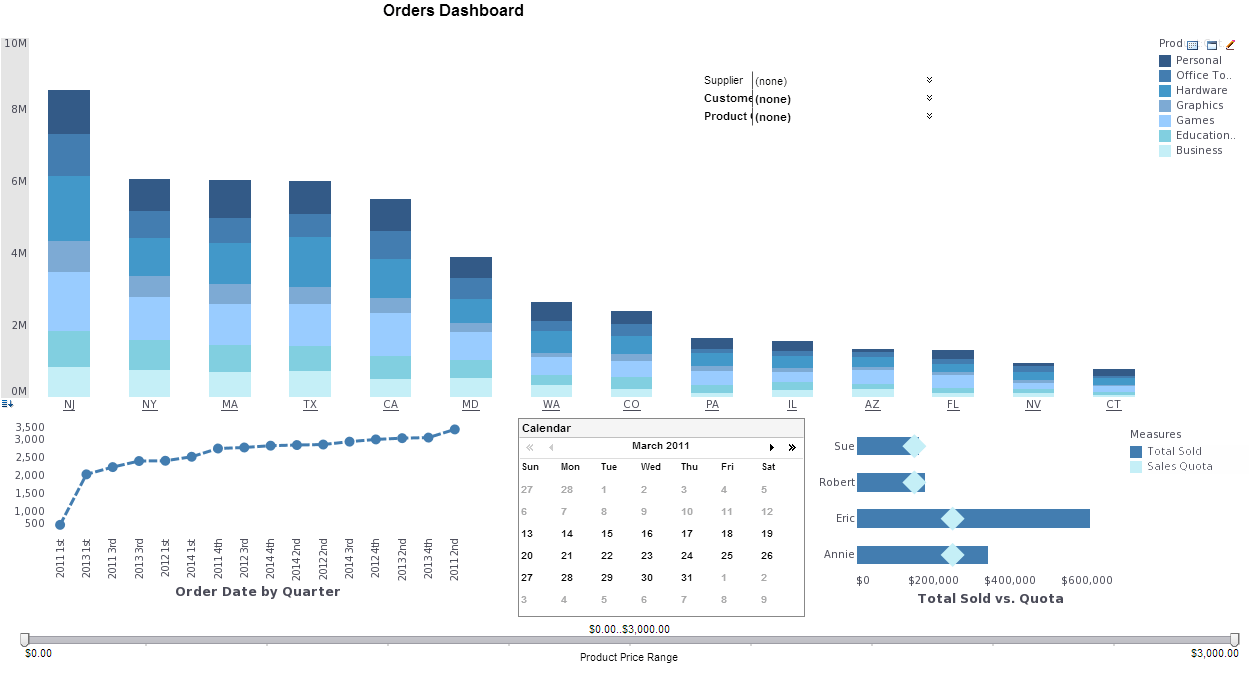The Value of eCommerce Analytics
It is a shame that so many ecommerce websites are still not making adequate use of data analytics. It is like leaving money on the table.
There Is Data Everywhere -- Use It
If you were a physical retailer, you would have to work hard to collect enough meaningful data to get your management information systems (MIS) to turn out actionable recommendations. But in the case of online retail, data logs are updated every time your customer interacts with your website.
Fancy Marketing Strategies Can Wait, First Focus on What the Customer's Actions Are Telling You
I'm sure you want to tap into visual marketing, content marketing, seasonal marketing, and other advanced eCommerce marketing strategies. But before you do that, why not simply evaluate the way customers interact with your website, and use that to guide your actions. Of course, it is possible to get overwhelmed by analytics. So let us look at the basic analytics data that you need to focus on.
| #1 Ranking: Read how InetSoft was rated #1 for user adoption in G2's user survey-based index | Read More |
A List of the Basic eCommerce Analytics
In other articles, we will explore advanced analytical techniques for eCommerce. For now the absolute basics that you need to focus on are:
How Many People Are Coming Your Way?
Sure we are interested in conversions, but the starting point of the business of eCommerce is to get people to visit your website. So, you need to track your page views, unique visitors, bounce rate, page views per visit, time spent on the website, and the like. By closely monitoring these traffic numbers, you can find out how:
- word of mouth is spreading
- different marketing initiatives are yielding traffic
- you compare with other eCommerce websites
- much more effort you will have to put in to meet your targets
- to interpret high bounce rates
- to lower bounce rates.
 |
View a 2-minute demonstration of InetSoft's easy, agile, and robust BI software. |
What Part of Your Website Are People Visiting?
Your expert opinion might have predicted customer fancy for certain products or product lines. But you know what they say about the proof of the pudding, right? By monitoring the areas that receive high and low traffic, you can find out:
- which products would gain the most from special promotion
- which products you should consider dropping
- the sensitivity of product-specific promotional activity
- the effectiveness of the menus and other navigation that you have designed.
How Are They Getting There?
This is one set of analytics that I like to monitor regularly, often multiple times a day. When you set up an eCommerce business, the vastness of the Internet can be overwhelming. You could be receiving traffic from search engines, social platforms, advertising, blogs, referring websites, and other sources. Each of these sources is sending you traffic for different reasons. Enhancing the level of traffic from each of these sources requires a different kind of expertise and a different level of expense. The most easily identifiable sources of traffic in your analytics program are:
- Search Engines: I love search engine traffic. It is free, and visitors are usually qualified customers.
- Keywords: If you are getting search traffic, it is triggered by a keyword (or keyphrase) that someone entered into the search box.
- Referring Websites: Certainly you want to know who links to you, especially if their link is sending you substantial traffic.
- Advertising: If you are investing in advertising, you want to monitor its performance.
When Do They Leave?
Ask eCommerce professionals about their scariest nightmare, and they will probably talk about shopping cart abandonment. In addition, if your bounce rate is too high on product pages, that too is a cause of concern. Once you know what is causing people to leave, you can certainly tweak your website to increase its stickiness.
 |
Read the top 10 reasons for selecting InetSoft as your BI partner. |
What Is an Advanced eCommerce Analysis that a Data Scientist Could Do to Improve Revenue?
An advanced eCommerce analysis conducted by a data scientist can unlock valuable insights and strategies to significantly improve revenue generation for an online retailer. One approach involves leveraging advanced predictive analytics techniques to forecast customer purchasing behavior and identify opportunities for targeted marketing campaigns and personalized product recommendations. By analyzing historical transaction data, customer demographics, and browsing behavior, data scientists can develop predictive models to anticipate future purchasing patterns, segment customers based on their likelihood to buy, and tailor marketing efforts to maximize conversion rates and customer lifetime value. Furthermore, data scientists can conduct cohort analysis to gain a deeper understanding of customer retention and loyalty trends over time. By segmenting customers based on their acquisition cohort and analyzing their purchasing behavior and engagement metrics, data scientists can identify patterns and drivers of customer churn, as well as opportunities to increase customer lifetime value through targeted retention strategies such as loyalty programs, personalized offers, and re-engagement campaigns. This analysis can help eCommerce businesses optimize their customer acquisition and retention efforts, ultimately driving sustainable revenue growth.
Another advanced eCommerce analysis that data scientists can perform involves market basket analysis to uncover cross-selling and upselling opportunities. By analyzing transaction data to identify frequently co-occurring products in customers' baskets, data scientists can identify product affinities and recommend complementary or related products to customers during the checkout process. This analysis can help eCommerce businesses increase average order value, enhance the customer shopping experience, and drive incremental revenue by strategically promoting product bundles, cross-category promotions, and personalized product recommendations based on individual customer preferences and purchase history.
Lastly, data scientists can leverage advanced pricing analytics to optimize pricing strategies and maximize revenue and profitability. By analyzing historical sales data, competitor pricing, market demand, and customer segmentation, data scientists can develop dynamic pricing models that adjust prices in real-time based on factors such as demand elasticity, inventory levels, and competitive dynamics. This analysis enables eCommerce businesses to implement data-driven pricing strategies that balance revenue optimization with customer satisfaction, driving increased sales and profitability while remaining competitive in the marketplace. Overall, advanced eCommerce analysis conducted by data scientists plays a crucial role in optimizing revenue generation strategies, enhancing the customer experience, and driving sustainable growth for online retailers in today's competitive digital landscape.


